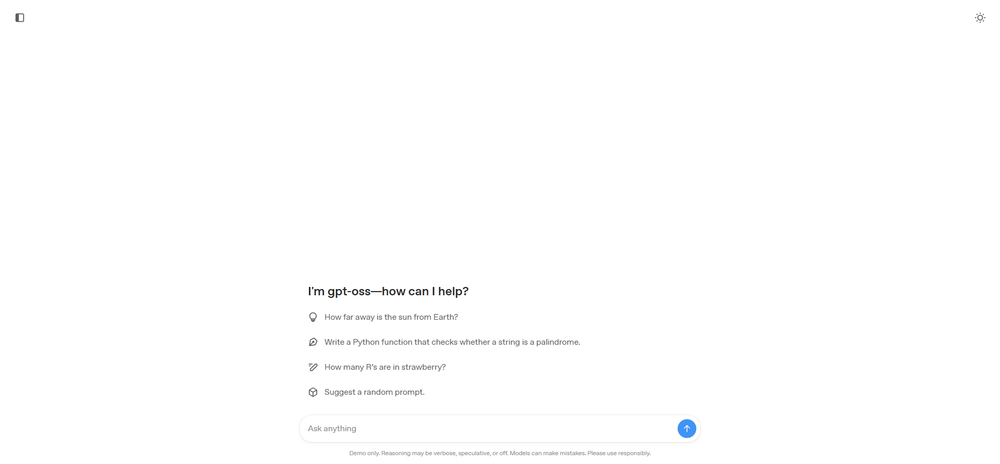Qwen3 is an open-source large language model released by Alibaba, introducing a hybrid reasoning mode that allows users to choose between “thinking” or “non-thinking” modes based on task requirements.
Model Architecture
Mixture-of-Experts (MoE) Architecture:
Qwen3 adopts a MoE architecture that activates only a subset of parameters during inference, enhancing computational efficiency. Specifically, the Qwen3-235B-A22B model contains 235 billion parameters in total, but only 2.2 billion are active during inference. This design enables the model to maintain high performance while significantly reducing computational cost.
Multiple Model Versions:
The Qwen3 series includes various versions to accommodate different parameter scales and functional needs:
- MoE Models: e.g., Qwen3-235B-A22B and Qwen3-30B-A3B
- Dense Models: e.g., Qwen3-0.6B, 1.7B, 4B, 8B, 14B, and 32B
Reasoning Modes
Thinking vs. Non-Thinking Modes:
Qwen3 introduces two reasoning modes to adapt to different task complexities:
- Thinking Mode: Best for complex logic and mathematical tasks, where the model reasons step-by-step for more precise answers.
- Non-Thinking Mode: Suitable for simple queries requiring fast responses. This flexibility helps optimize efficiency and quality across various scenarios.
Multilingual Support
Language Capability:
Qwen3 supports over 119 languages and dialects, offering robust instruction-following and translation capabilities, making it suitable for global applications.
Performance Enhancements
Inference Capability:
Qwen3 excels in benchmark tests, especially in mathematics, code generation, and commonsense reasoning—outperforming many mainstream models such as DeepSeek-R1 and OpenAI's o1. Its performance in complex tasks makes it a leading open-source model.
Tool-Use Capability
Integration and Tool Utilization:
Qwen3 has strong tool-calling abilities, allowing seamless integration with external tools to handle complex multi-step operations—ideal for developing intelligent assistants and automation tasks.
Training Data and Optimization
Pretraining Dataset:
Qwen3 was trained on approximately 360 trillion tokens, vastly improving its knowledge coverage and reasoning skills. Its training process was optimized in multiple phases to ensure high performance across diverse tasks.
Application Scenarios
1. Natural Language Processing
- Text Generation and Understanding: Qwen3 generates high-quality text suitable for content creation, news writing, and social media management. It also excels in creative writing and roleplay scenarios, offering engaging conversational experiences.
- Multilingual Support: With support for over 119 languages, Qwen3 is ideal for translation services and multilingual customer support.
2. Programming and Mathematics
- Code Generation and Debugging: Qwen3 performs well in programming tasks, offering code suggestions, snippets, and debugging assistance for software development.
- Mathematical Reasoning: It has strong capabilities in solving complex math problems, useful in educational and research contexts.
3. Agents and Tool Integration
- Intelligent Agents: Qwen3’s strong agent capability allows precise integration with external tools and data sources, making it suitable for tasks such as office automation, customer service, and intelligent assistants.
- Tool Calls: Through Qwen-Agent, users can easily invoke various tools, making it ideal for real-time data processing and analytical applications.
4. Multimodal Applications
- Image and Audio Understanding: Qwen3's multimodal abilities enable it to process text, images, and audio data—applicable in scenarios like medical image analysis and video content comprehension.
5. Enterprise and Business Applications
- Real-Time Risk Analysis and Compliance Review: In finance, Qwen3 can process large volumes of documents for real-time risk and compliance analysis, improving decision-making efficiency.
- Marketing and CRM: It can generate personalized marketing content and customer interactions, enhancing customer satisfaction and engagement.
6. Education and Training
- Personalized Learning Assistant: Qwen3 can serve as an educational tool, offering personalized learning suggestions and tutoring to help students progress in various subjects.




